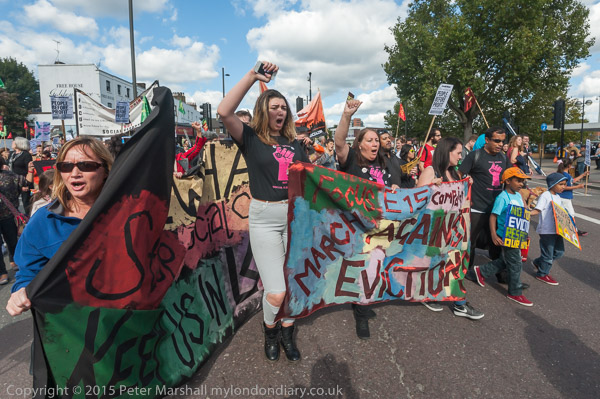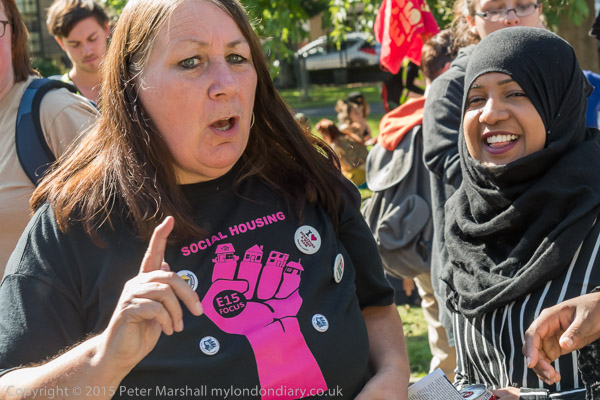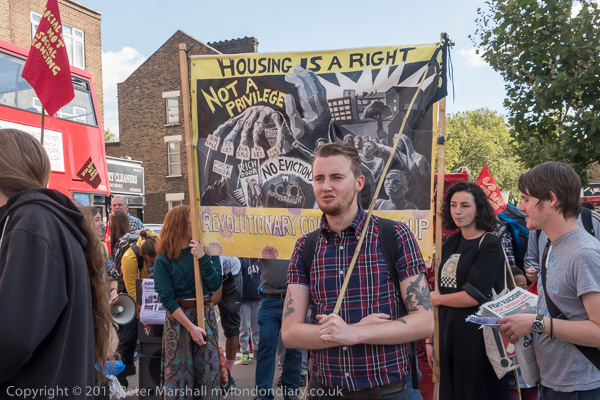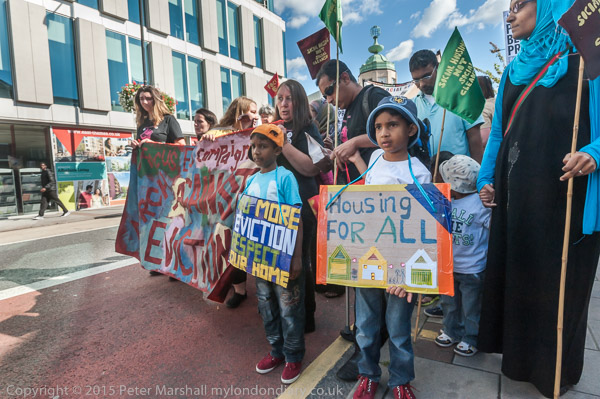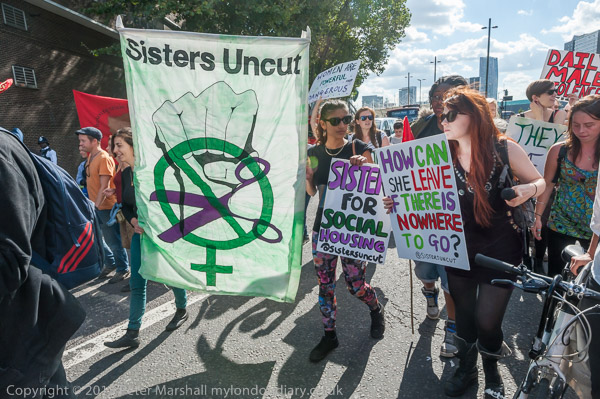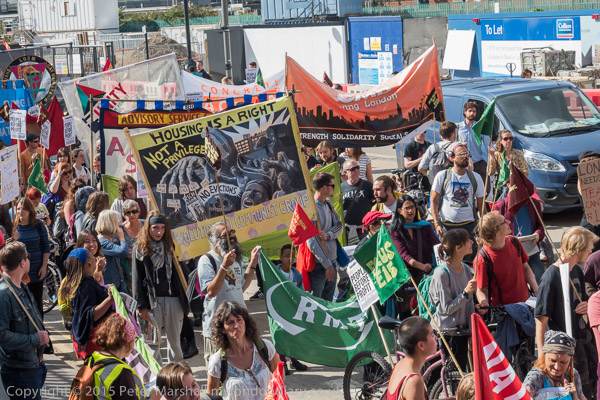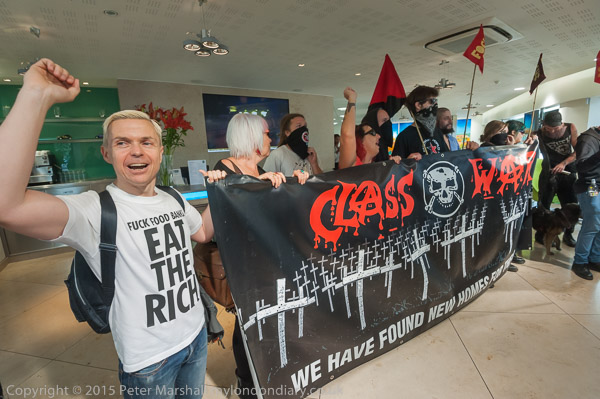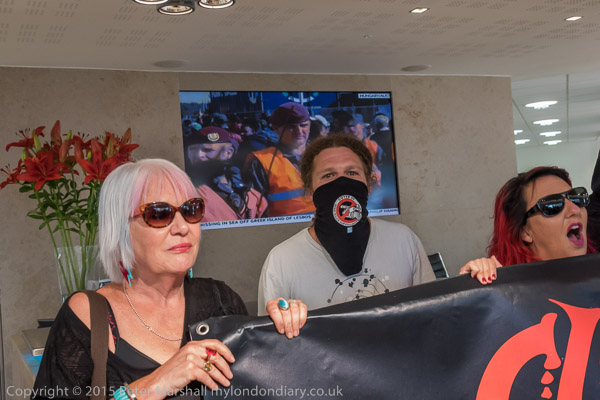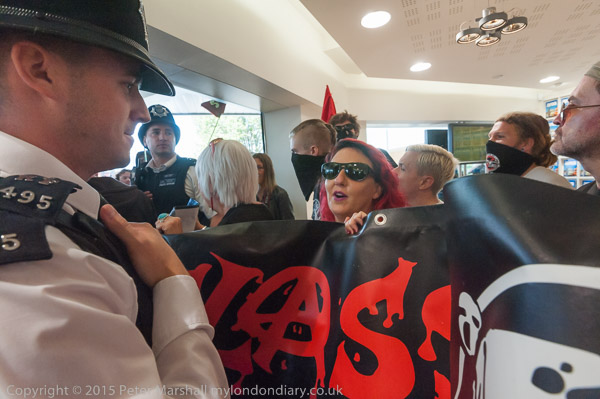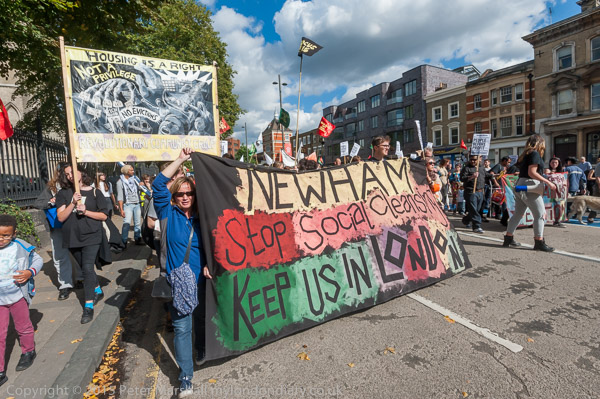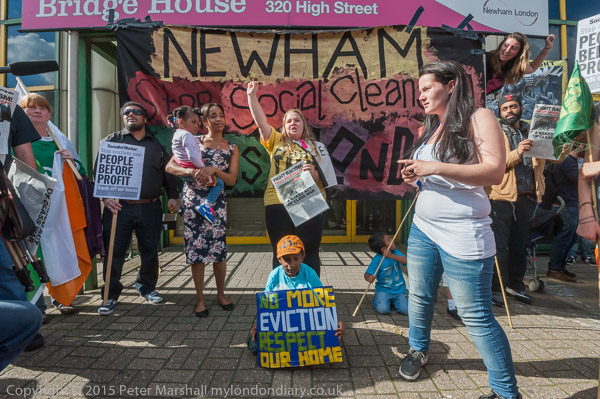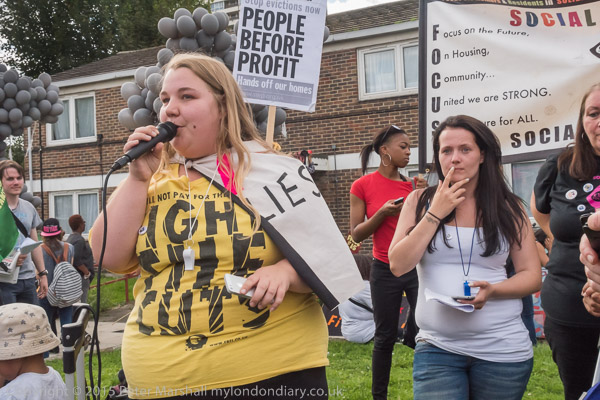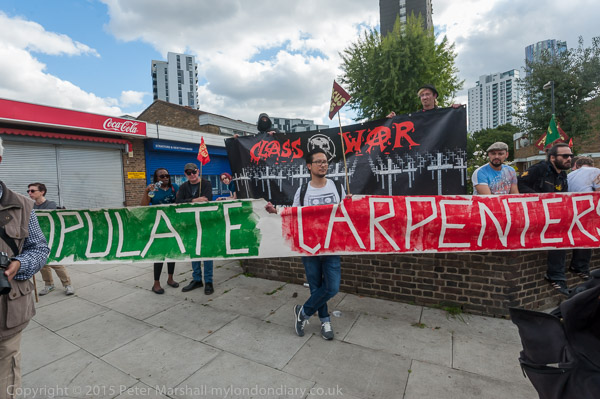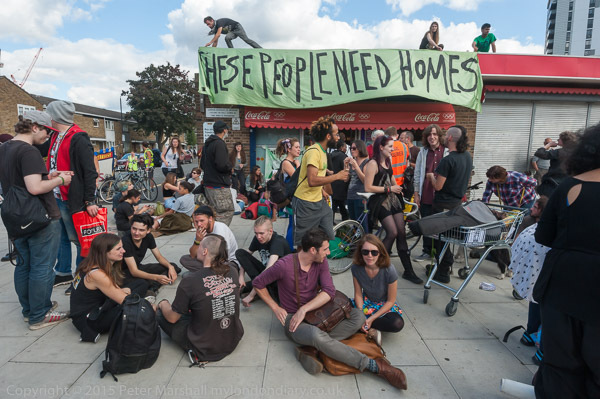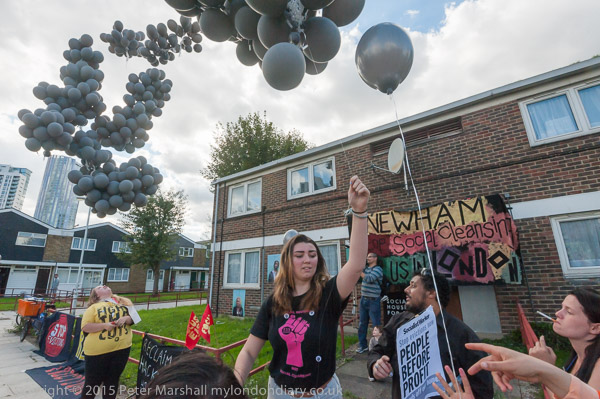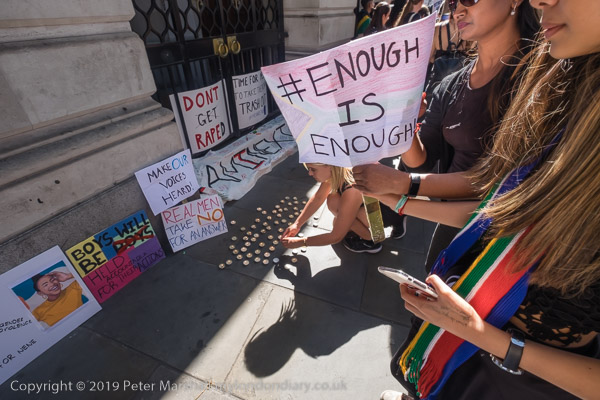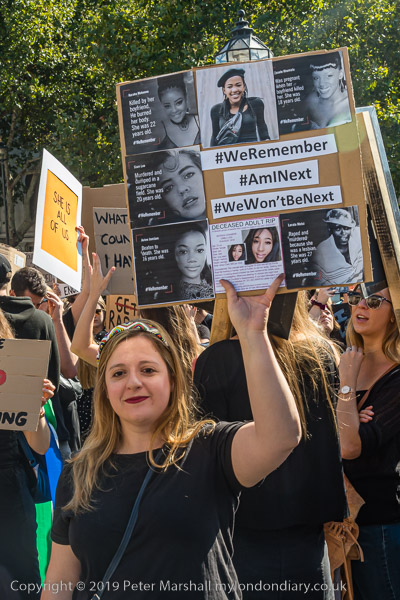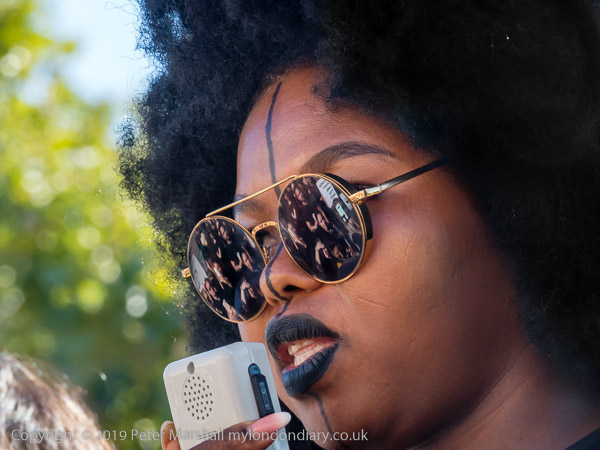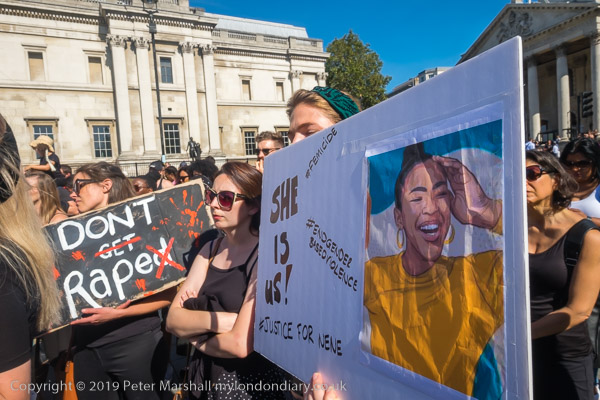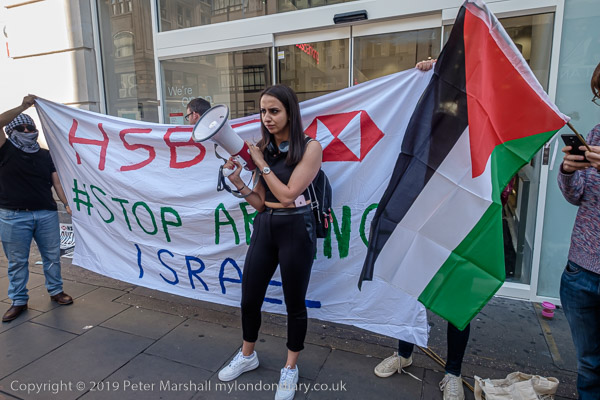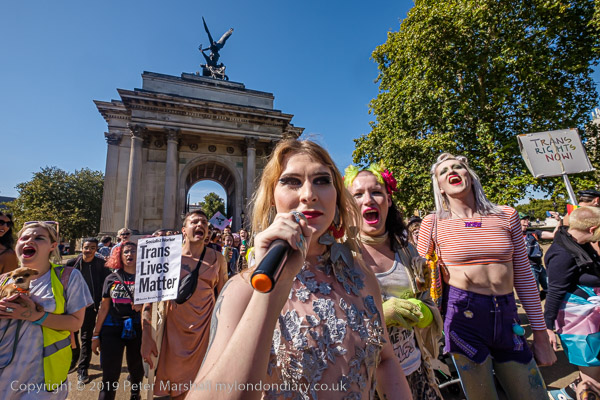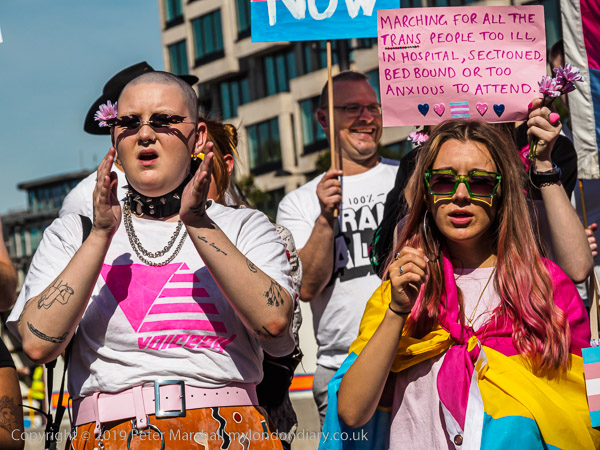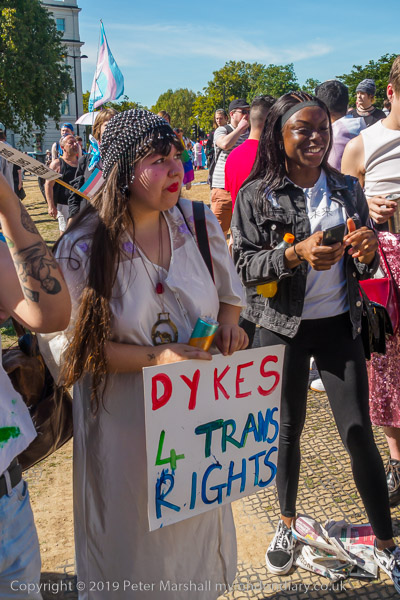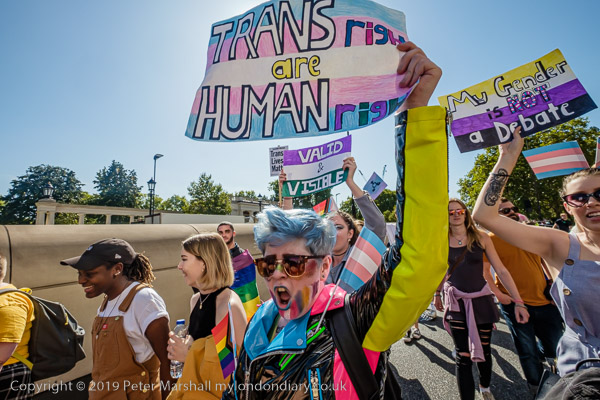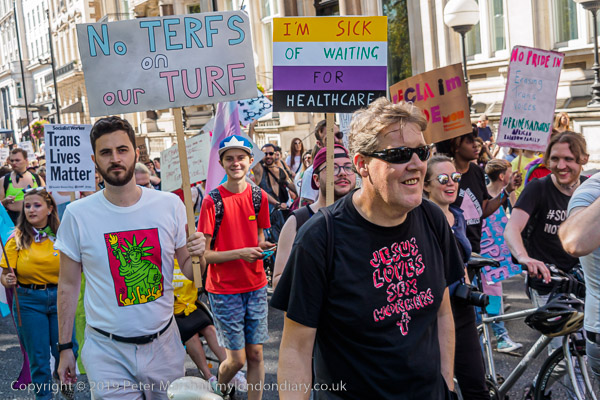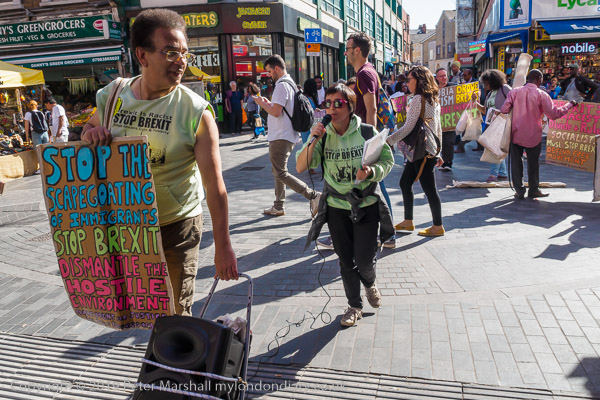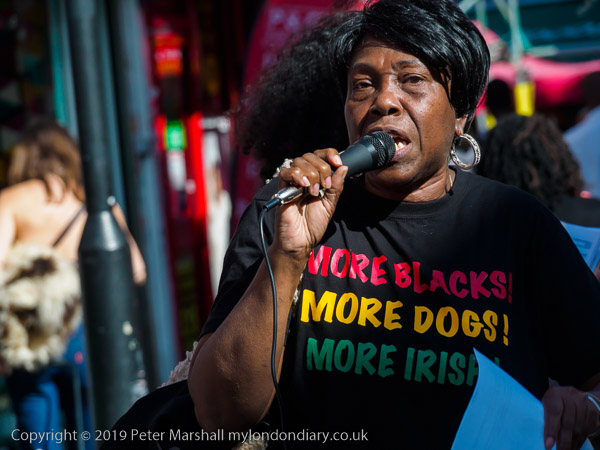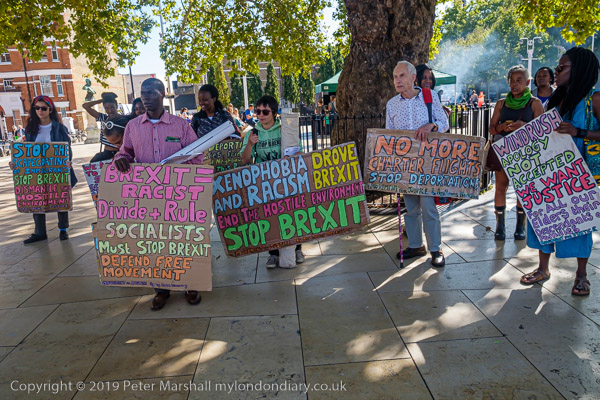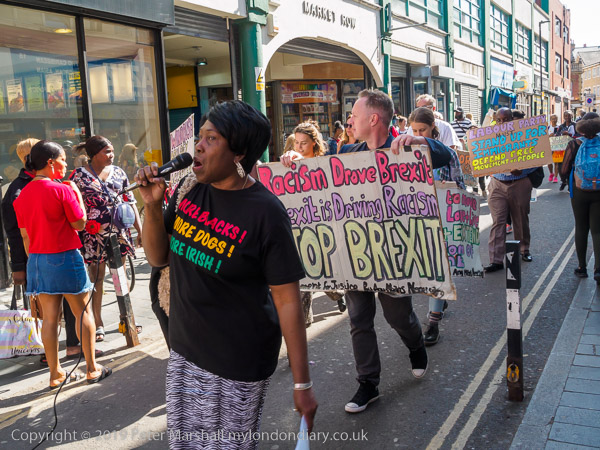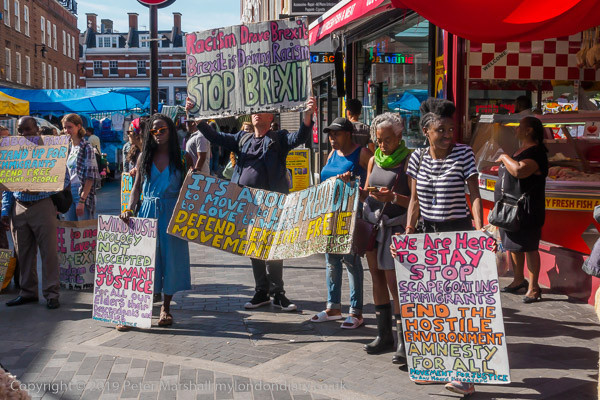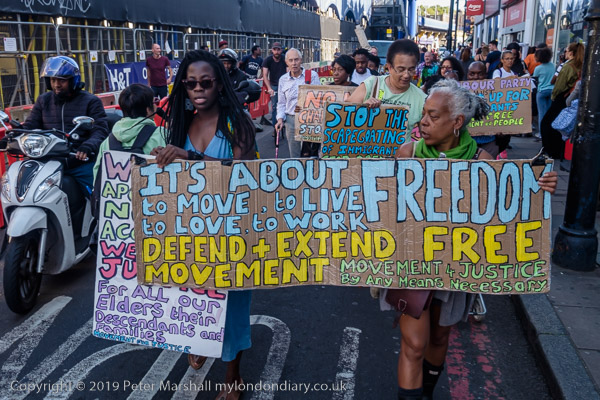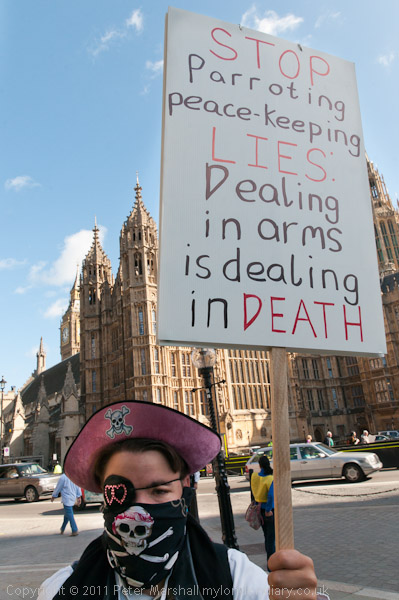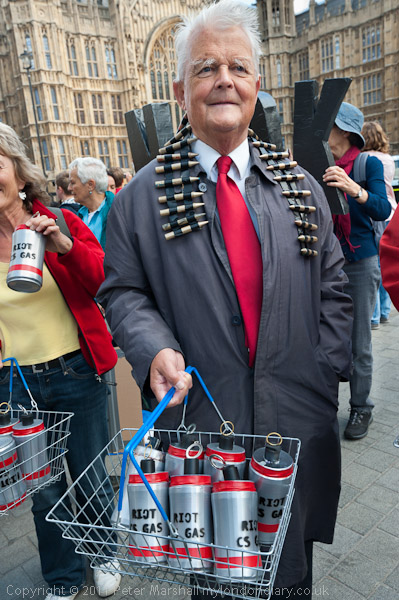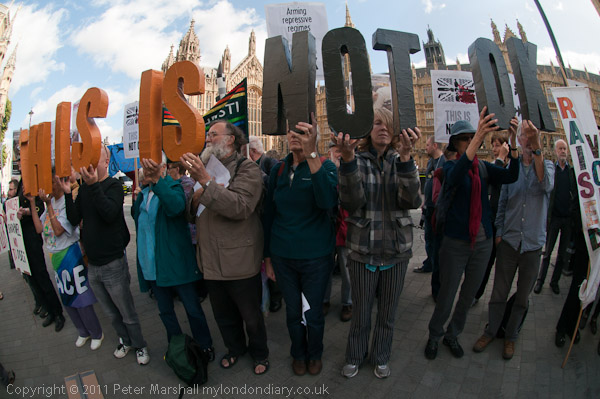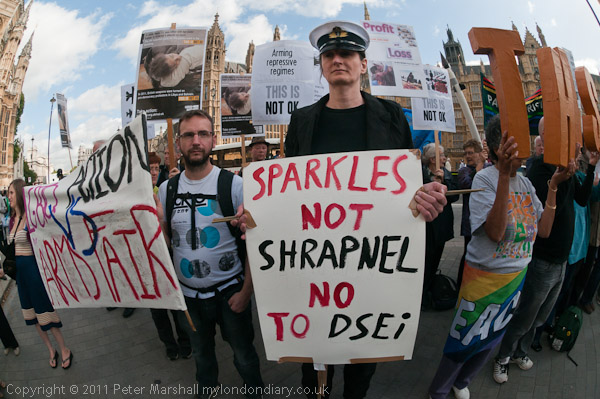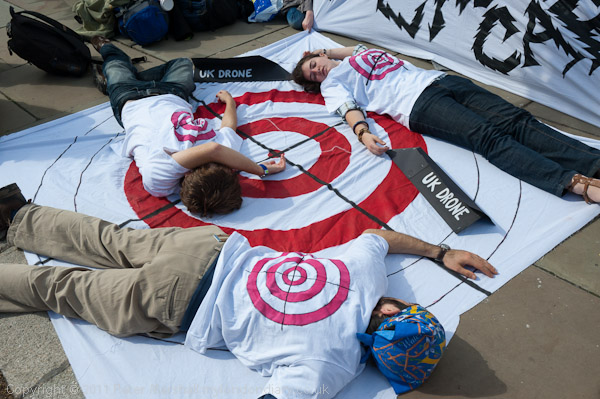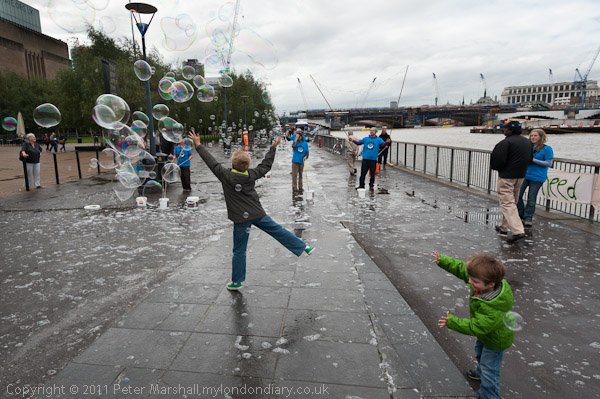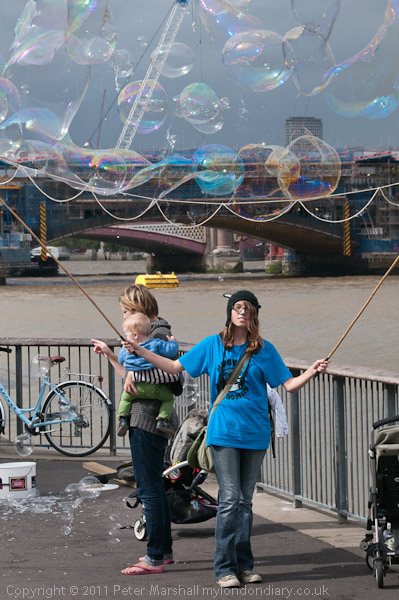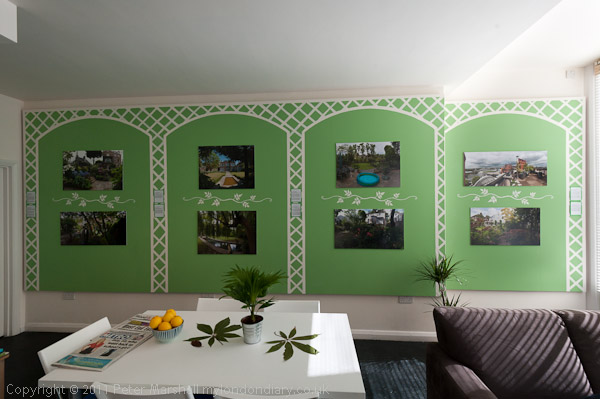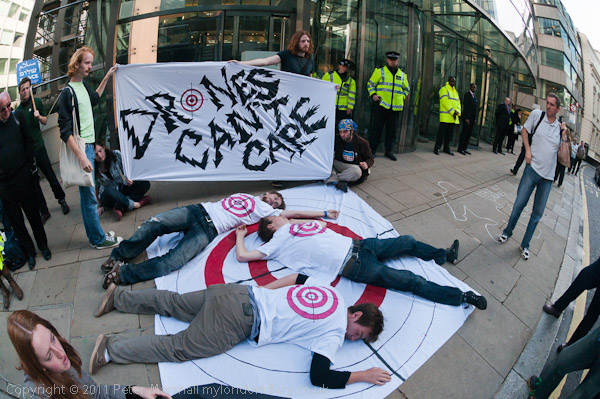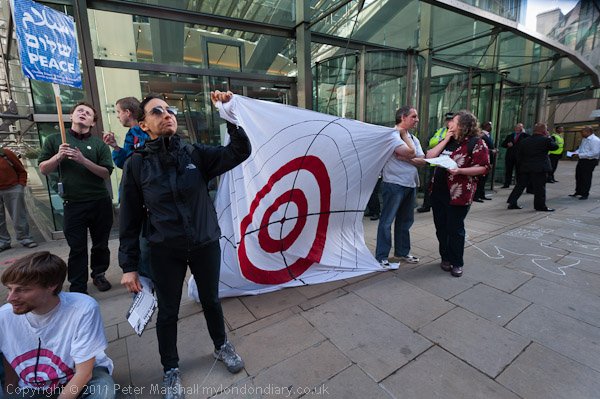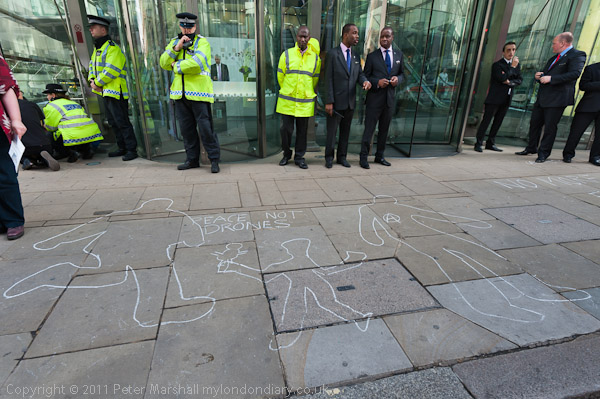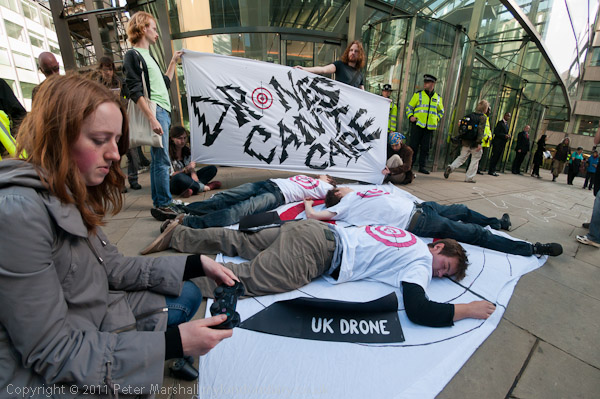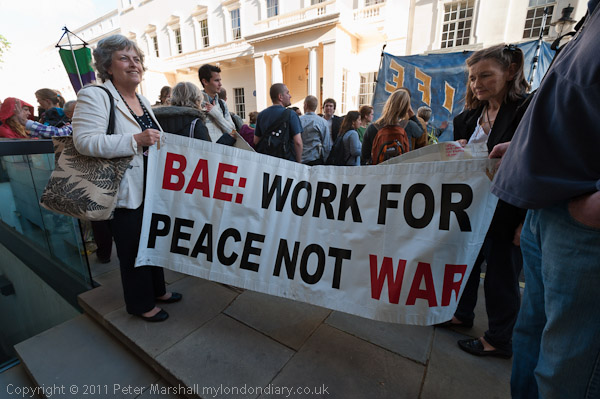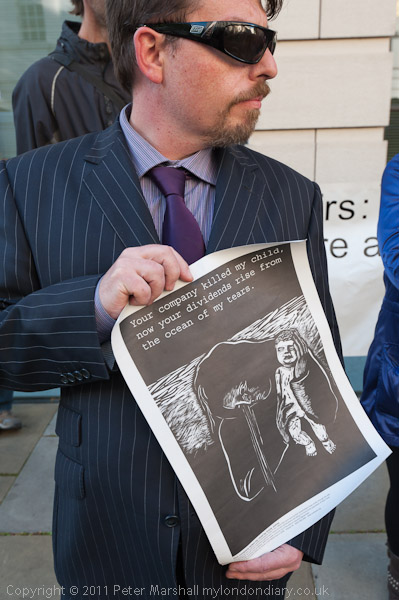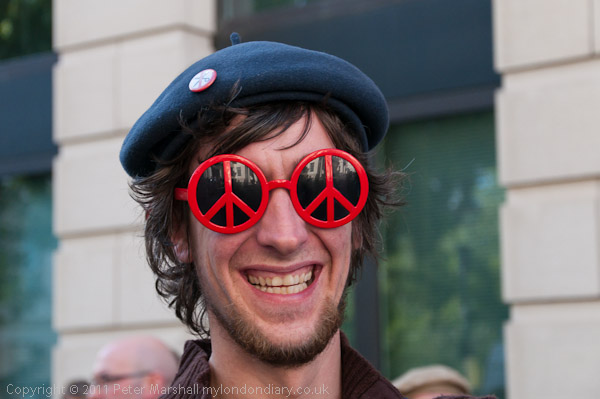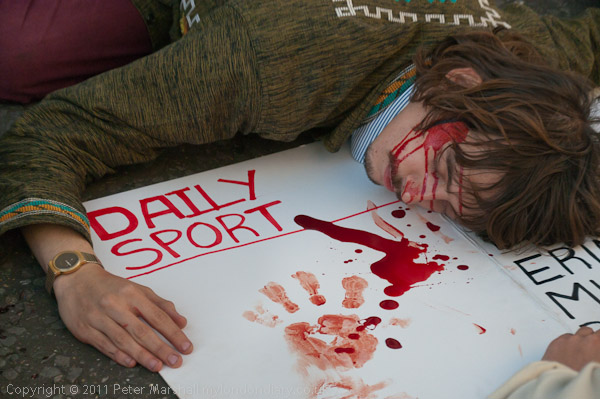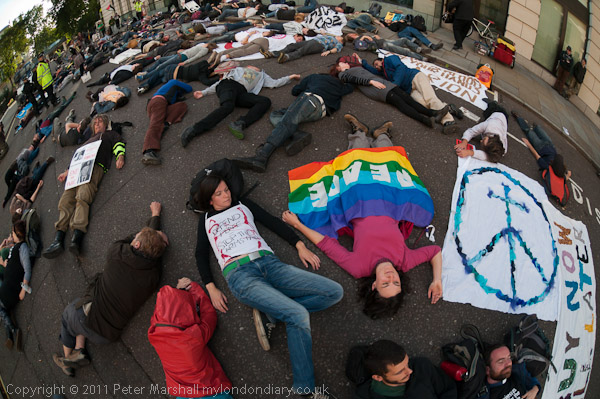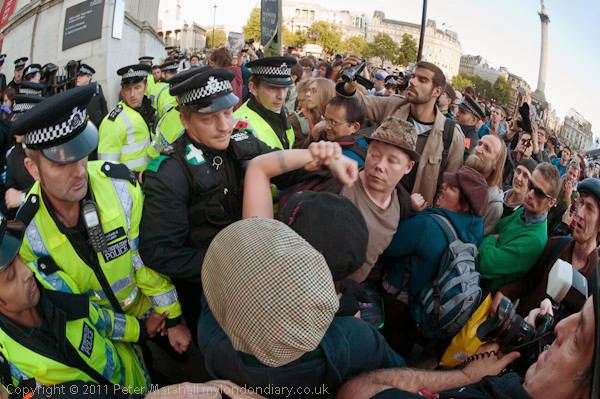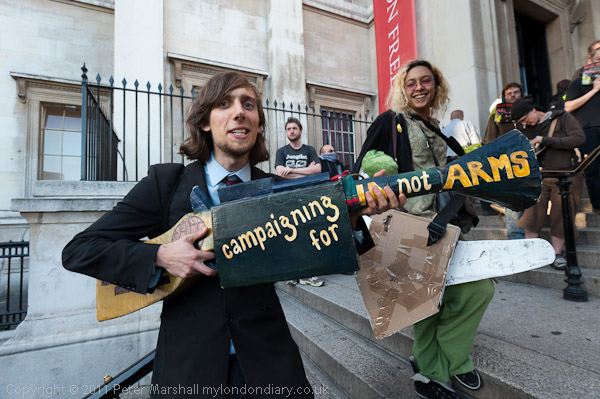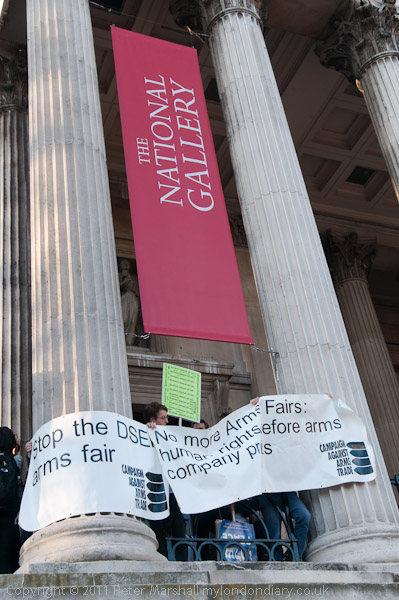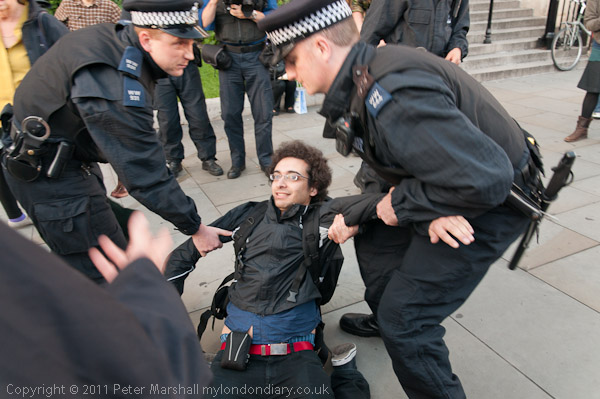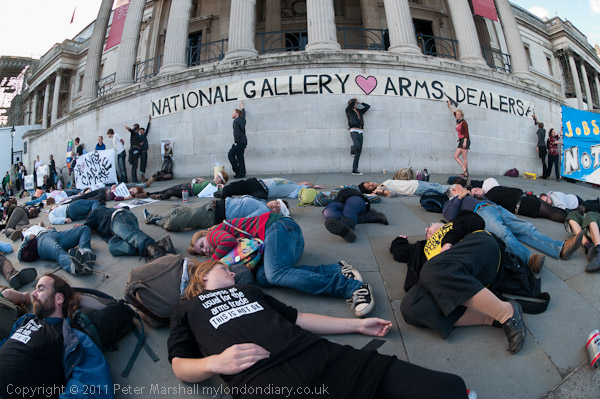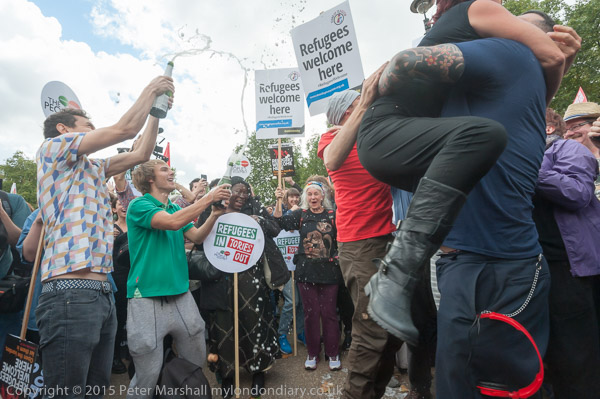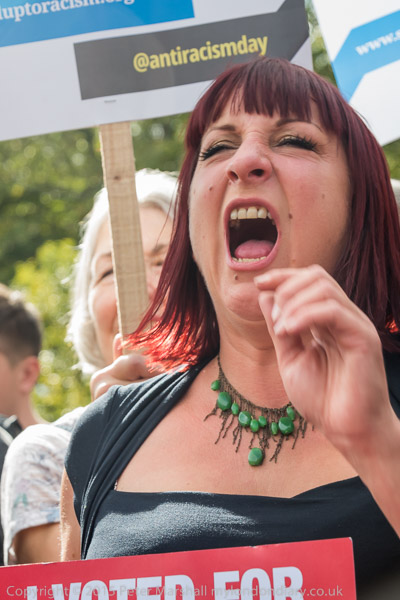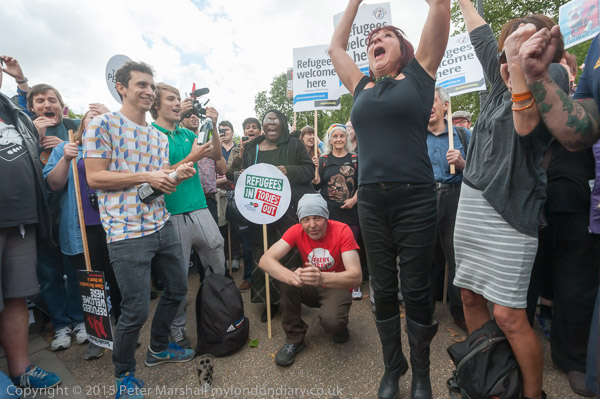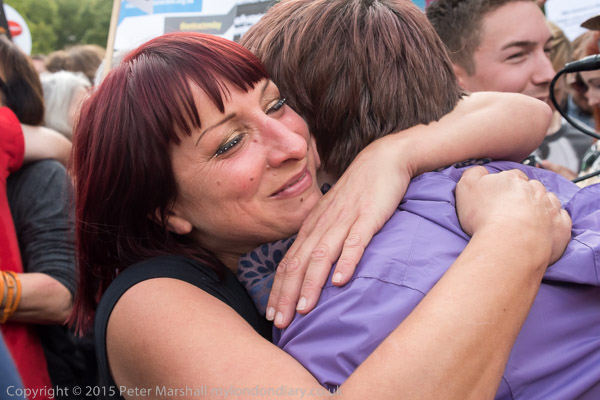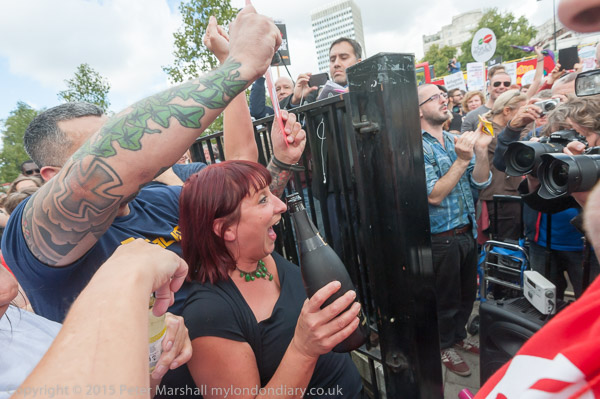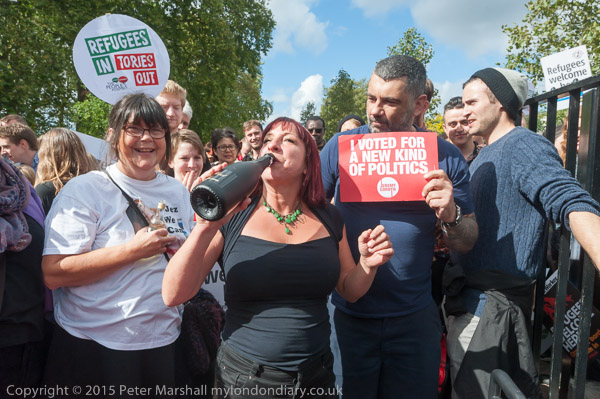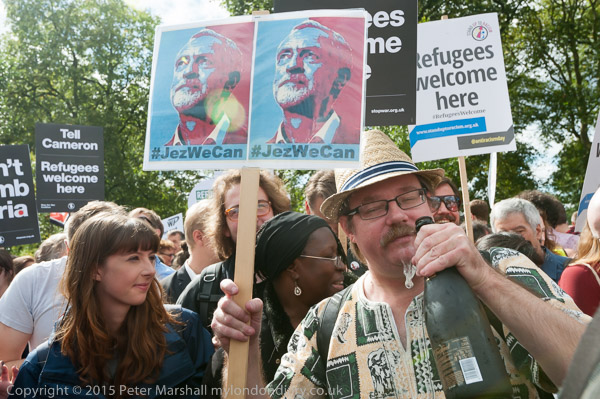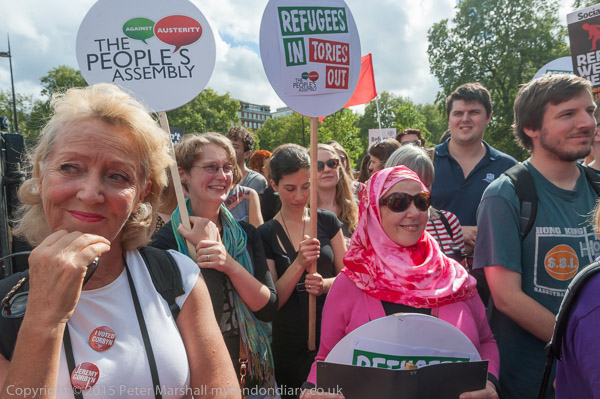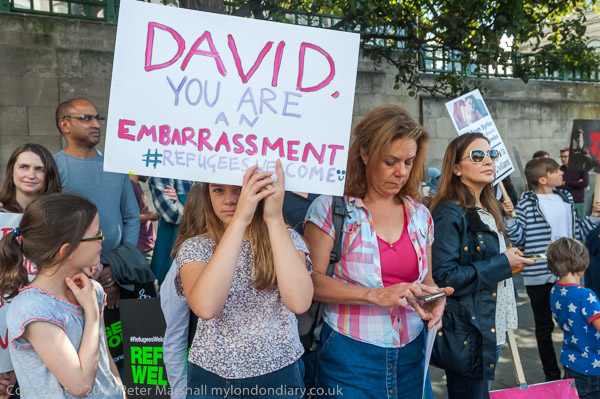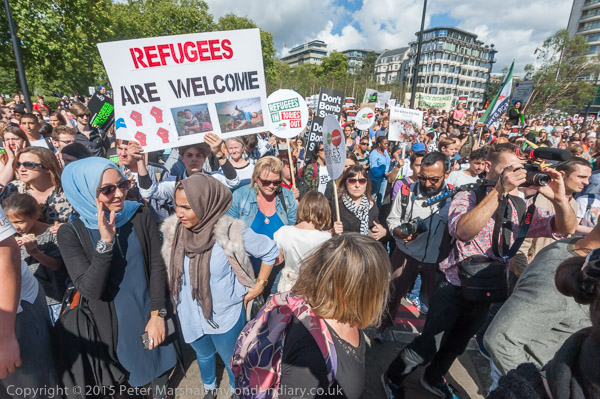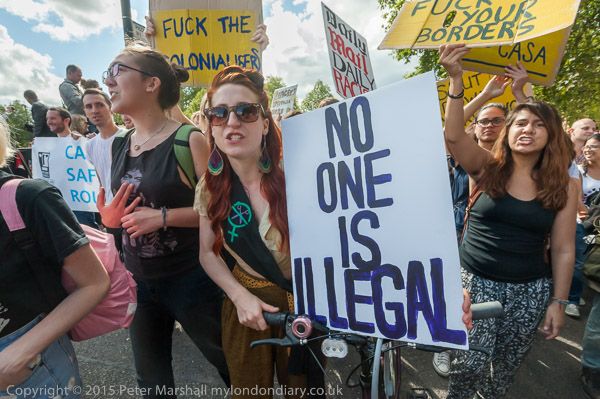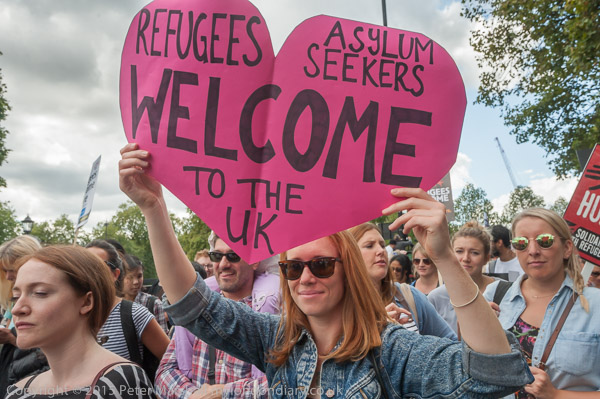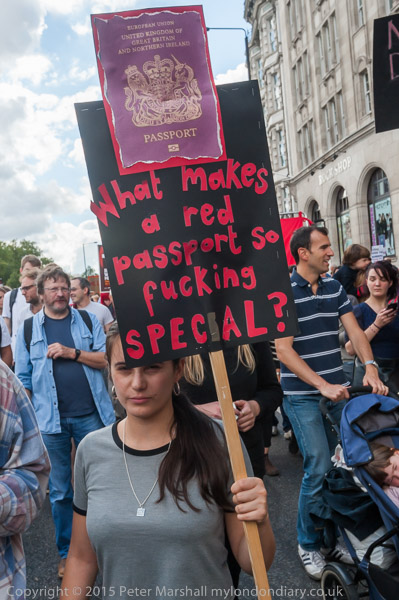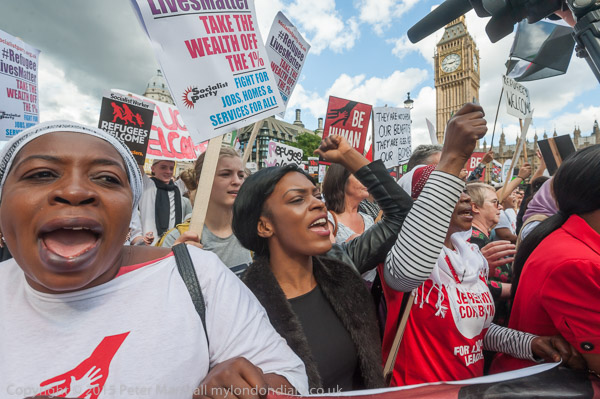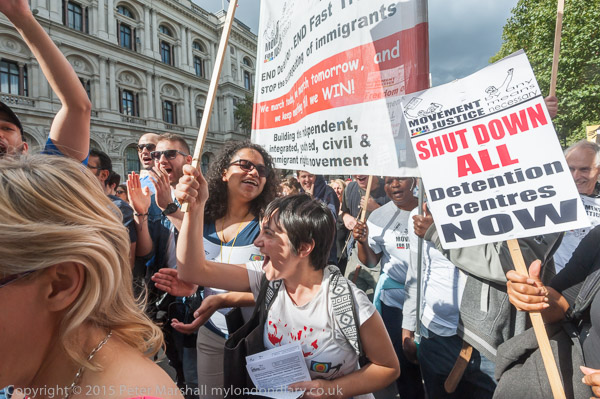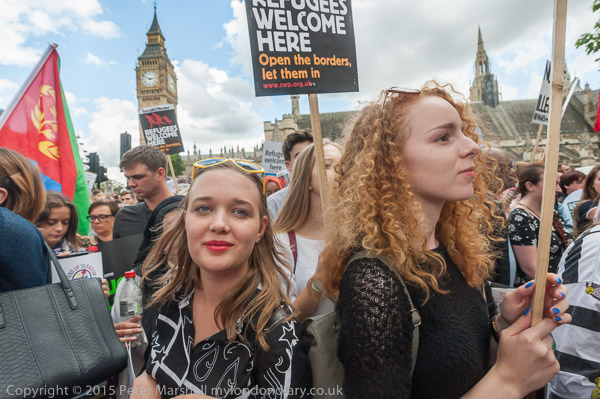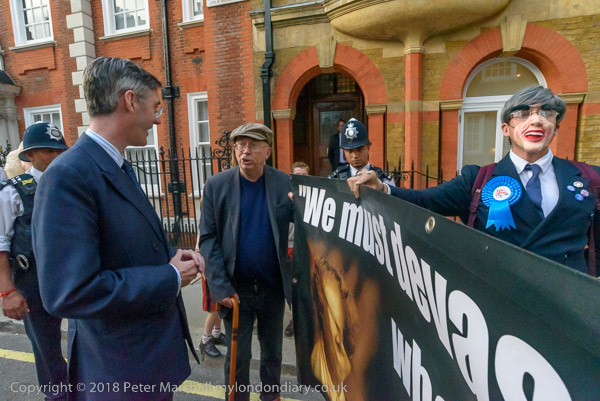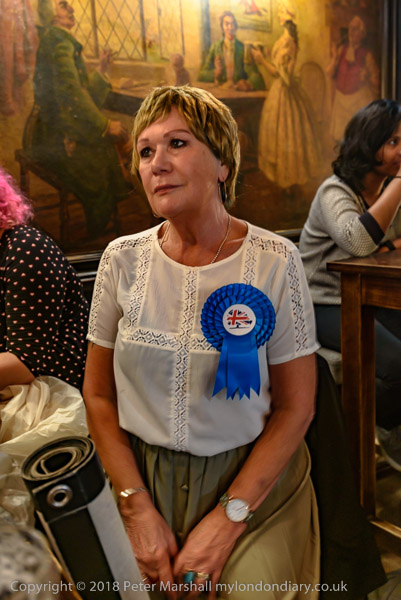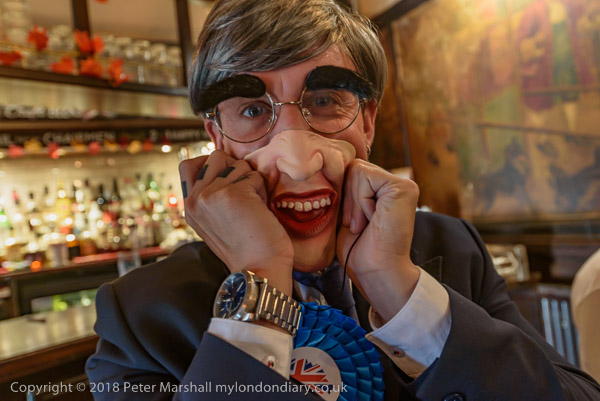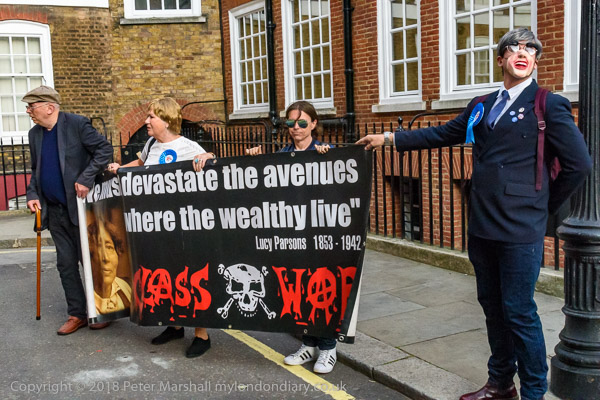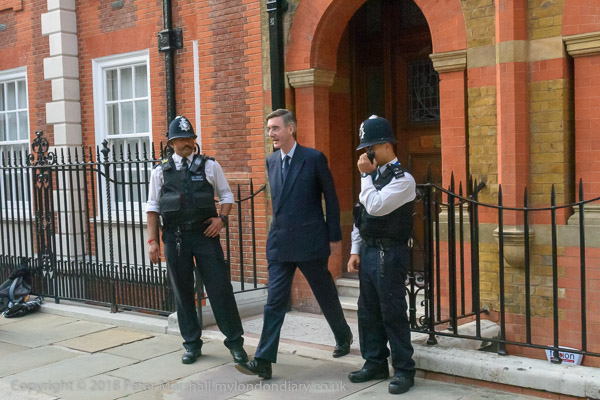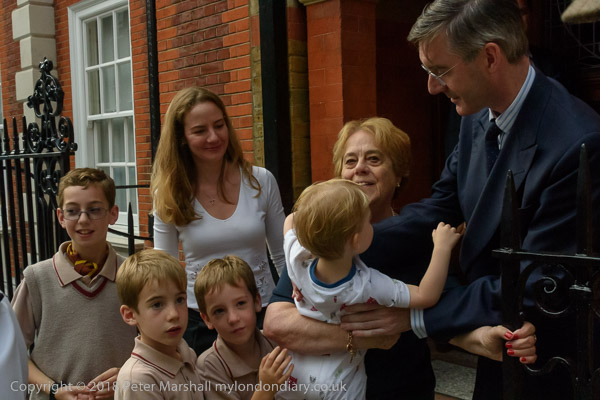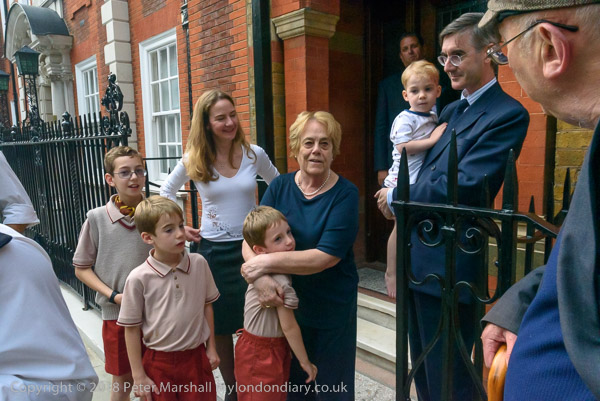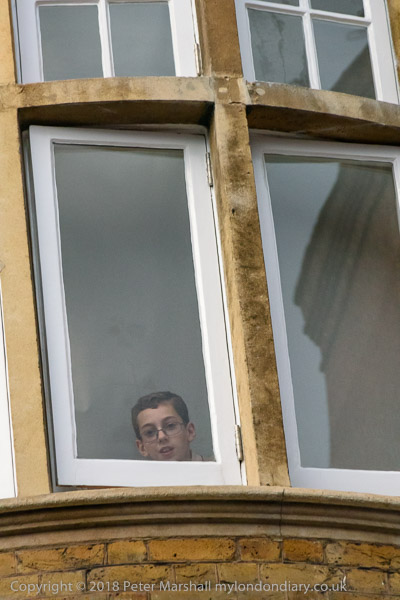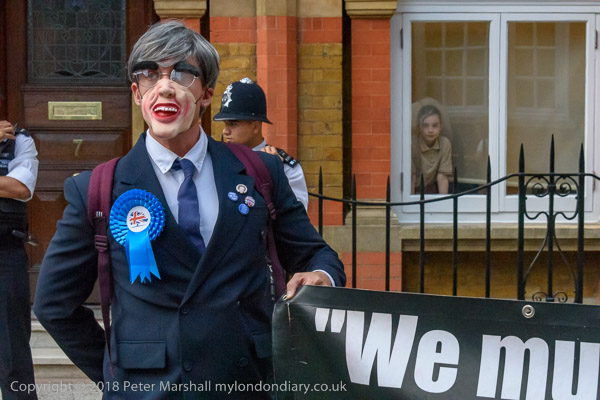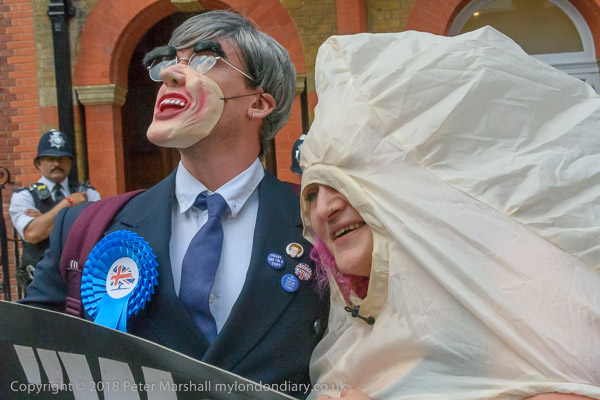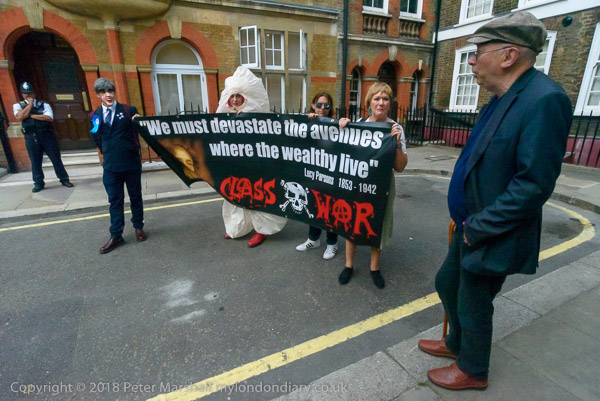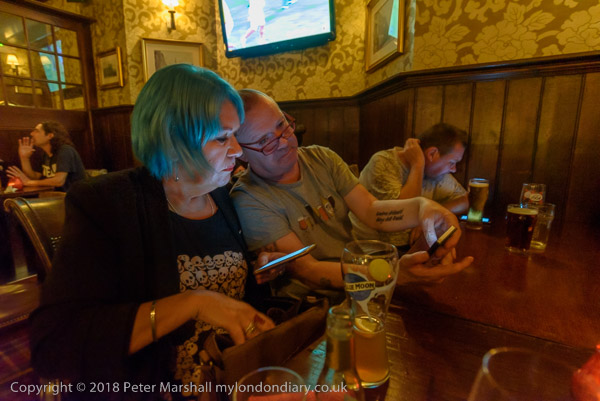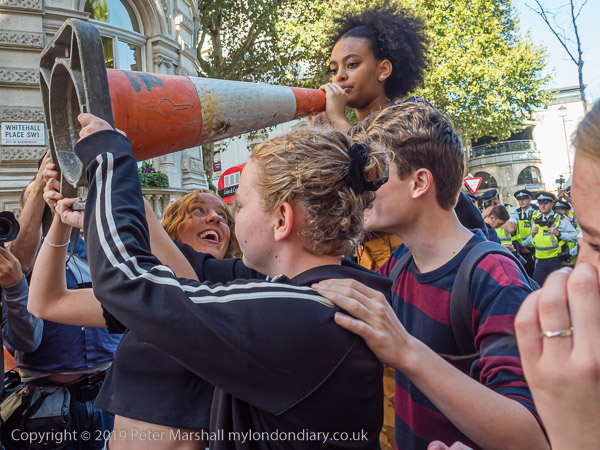
I spend most of my time on Friday 20th September covering the Earth Day Global Climate Strike inspired by Greta Thunberg which brought huge numbers of schoolchildren along with teachers, parents and other older supporters to a rally filling Millbank. Others were starting later from various parts of London to join in and I made short visits to both the Elephant and Castle and Windrush Square in Brixton to photograph them there, returning to Whitehall to photograph a large crowd who were continuing the protests there. Finally I went to Carnaby Street where the Islamic human rights group Inminds were protest outside the Puma store calling for a boycott of Puma products.
Global Climate Strike Rally – Millbank, London
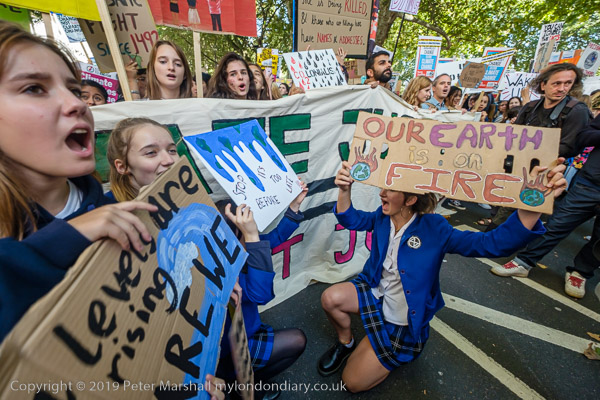
I began taking pictures of people going to the rally when I entered Parliament Square. Many schools had brought large groups of pupils to take part in the protest, and had obviously spent some time preparing hand-painted placards and banners. Greta Thunberg’s example has led to a great awareness among many young people of the existential threat posed by global warming, as too have the television programmes by the ageing David Attenborough, and they showed themselves to be convinced of the need for urgent action.
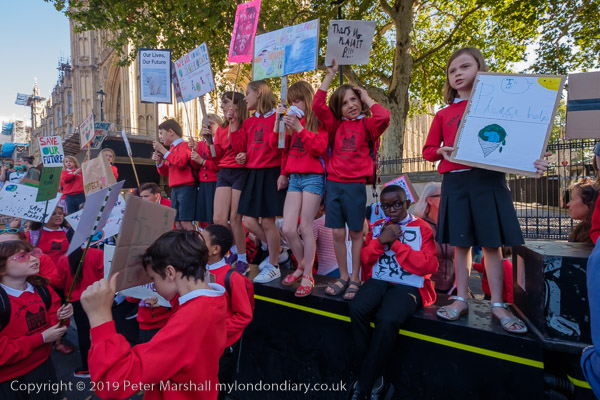
Unfortunately politicians and companies – particularly those with interests in fossil fuels – have been rather less convinced, and although we have seen plenty of words and promises, real actions have so far failed to come anywhere close to meeting the desperate need. Our new UK government under Liz Truss has started by going backwards on the issue, issuing licences for fracking, and almost certainly in the first few days following the Queen’s funeral will be bringing forward other measures which will make climate disaster even more inevitable.
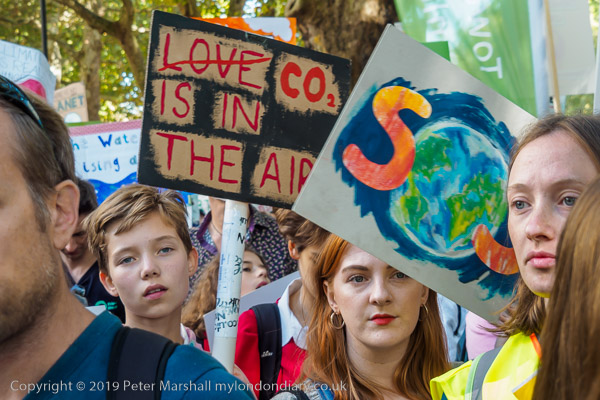
Crowds got so packed that I had to give up trying to walk up Millbank to the lorry on which the speakers, bands and others were to perform both live and on large screens, and I had to divert through the side streets to approach it from behind.
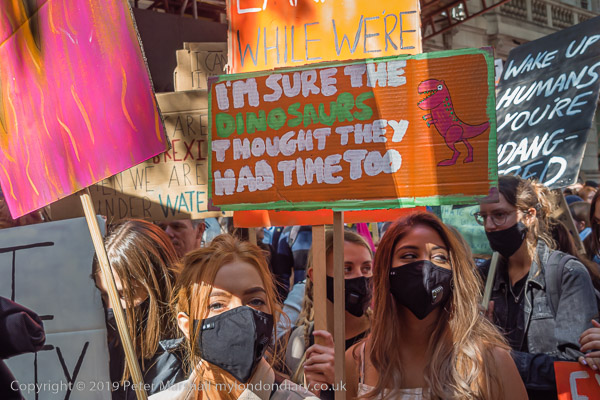
I spent some time photographing those at the front of the protest, then decided to move back through the crowd taking pictures. It was slow going both because I stopped to take pictures, but also because I needed to keep asking people to let me squeeze past them, but eventually I got back to Old Palace Yard and Parliament Square where movement was now easy, though there were still groups of protesters.
Elephant & Brixton Global Climate Strike
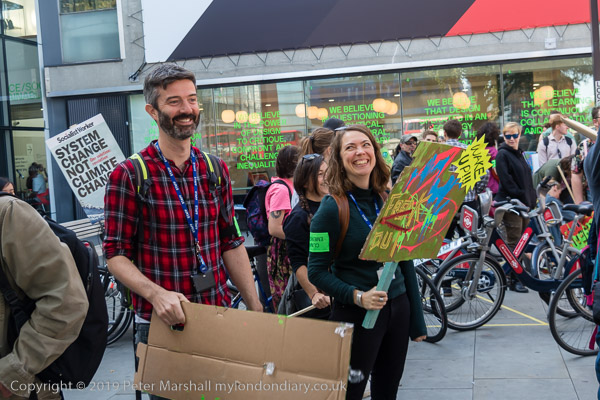
I took the tube from Westminster Station, changing at Embankment to the Bakerloo Line which took me to the Elephant and Castle. Outside the University of the Arts was a poster display and people were gathering to march to join the protests. I photographed a small march setting off to join with workers at Southwark Council’s offices in Tooley St, but left them after a few hundred yards to go back to the Northern Line, changing at Stockwell to get to Brixton.
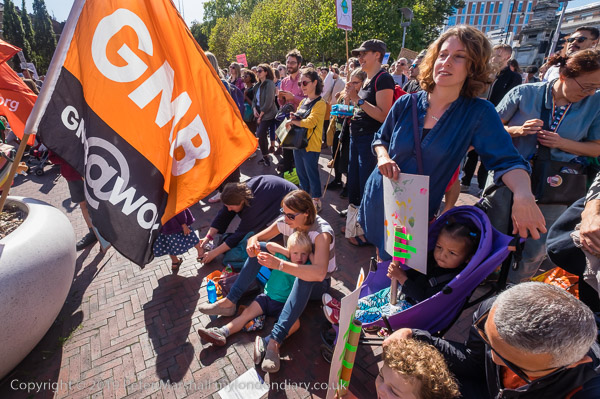
Teachers and parents had come with children from Lambeth schools for a rally in Brixton Square which was still in progress as I arrived.
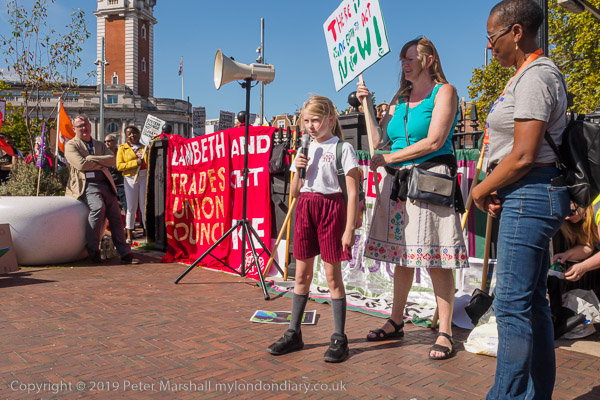
There was an impressive speech from a young protester and support from a local MP before the rally ended and many of those present got ready to take the tube to join in the protest outside Parliament.
Elephant & Brixton Global Climate Strike
Global Climate Strike Protest continues – Whitehall
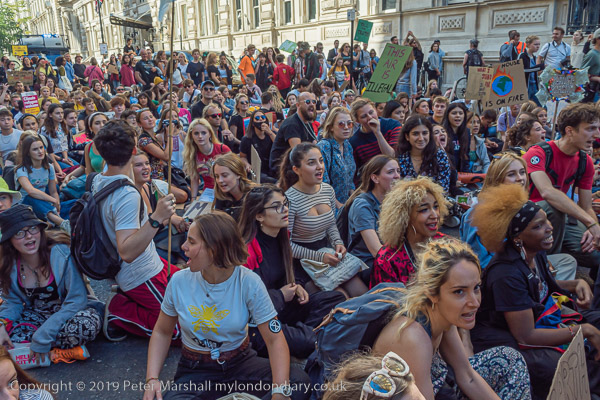
I hurried to the tube ahead of the children and arrived in Westminster where people were sitting on the road and blocking Whitehall, with police trying to persuade them to move.
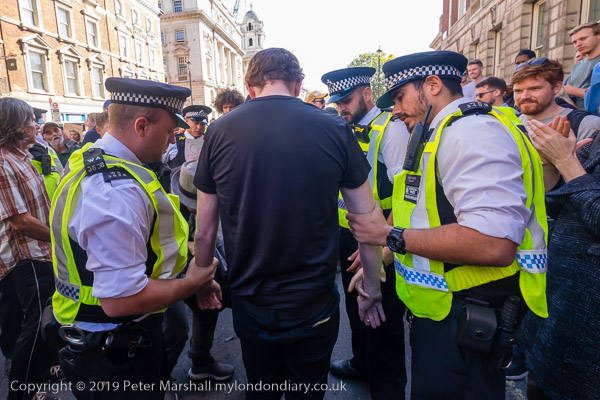
I saw one man being arrested and led away towards a waiting police van, and the road was almost cleared when a large crowd of school students came from Parliament Square to march up Whitehall blocking it again.
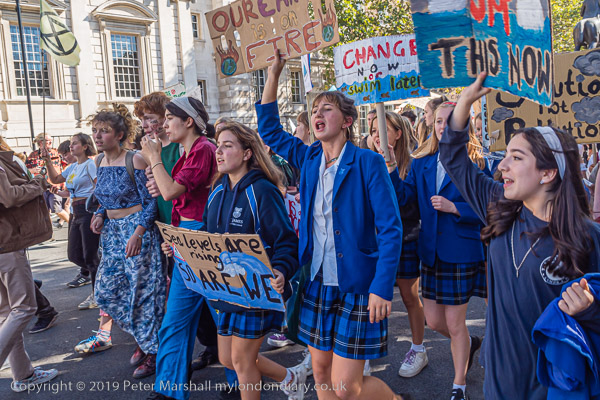
Police tried to stop them and they turned down Horseguards Ave, then up Whitehall Court and into Whitehall Place where they were finally stopped at the junction with Northumberland Avenue and sat down on the road.
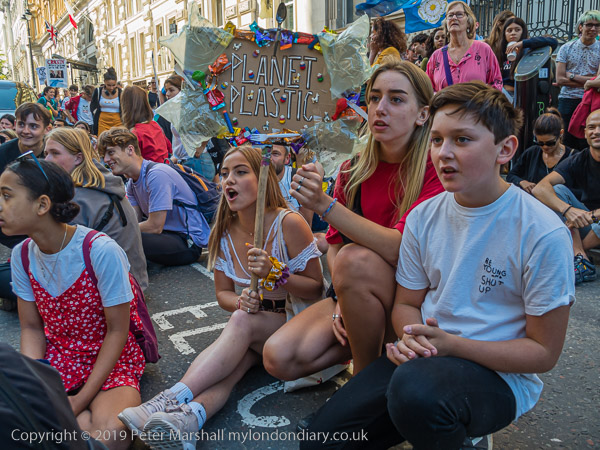
There were a few sort speeches and a lot of chanting slogans as police attempted to get them to move. I couldn’t understand why the police were bothering as they were on a road that has very little traffic and were causing no problem in sitting there.
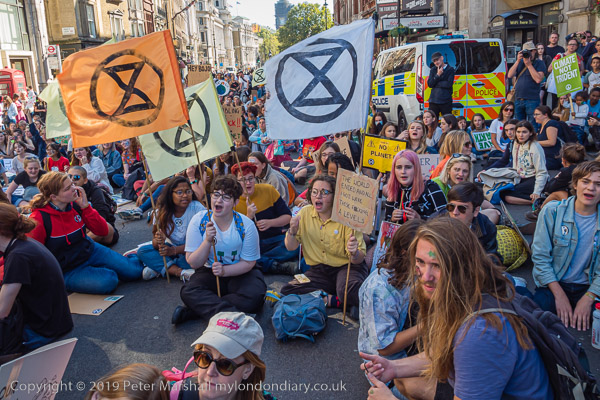
Eventually they did decide to do as the police said and got up and moved – back to sit down and block Whitehall again. Eventually they stood up and began to march towards Parliament Square, nicely in time for me to cover a different protest in Carnaby Street.
Global Climate Strike Protest continues
Carnaby St Puma Boycott
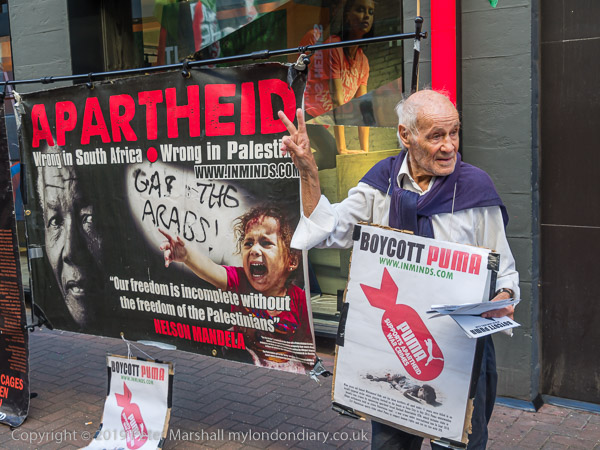
Whenever tourists come up to me in London and ask me (as sometimes happens) the way to Carnaby Street I’m always tempted to say “You just go back 50 years“, but I’m actually more helpful. But it always surprises me that this rather ordinary street of mainly small shops still attracts tourists so long after it was the touted as the epi-centre of ‘Swinging London’. It still puts on something of an effort, but I find it rather sad. Somehow not the same if you are not wearing flares.
Puma is the third largest sportswear manufacturer in the world, coming from a company founded in Bavaria in 1924 by two brothers. Both brothers were members of the Nazi party during the war and after bitter arguments split up in 1948 to form Adidas and Puma, two companies engaged in bitter rivalry. Adidas is now the second largest sports manufacturer in the world.
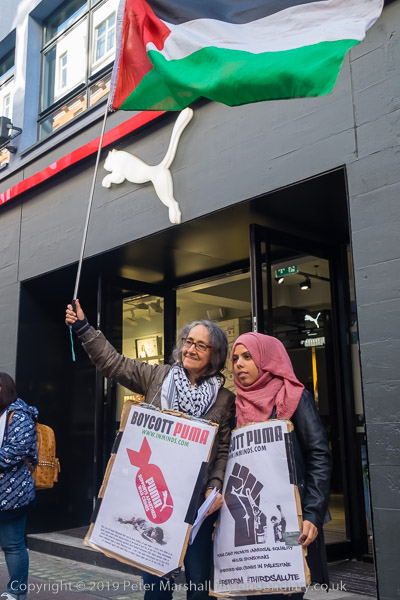
The Israel Football Association began life in 1928 as the Palestine Football Association, changing its name following the foundation of the state of Israel in 1948. It only represents Israeli clubs and there is a separate Palestinian Football Association covering the West Bank. But the IFA includes six clubs based in illegal Israeli settlements in the West Bank.
Adidas sponsored the IFA until 2018, when under pressure from Palestinian sports clubs and the international BDS movement they ended their sponsorship. Rivals Puma then took it up, becoming their only international sponsorship and over 200 Palestinian athletes and sports clubs have called for a Puma boycott.
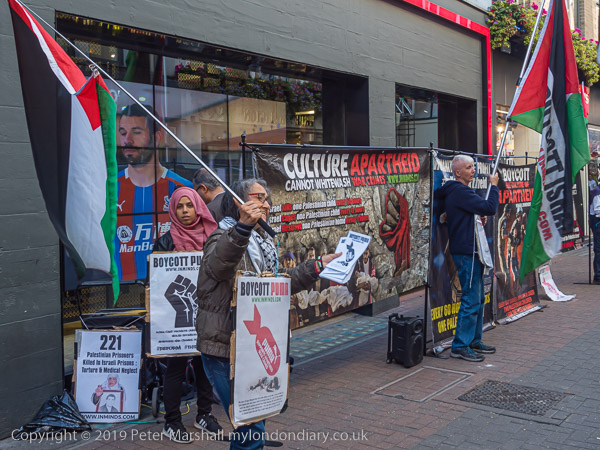
Inminds Islamic human rights group organises protests in London at companies and events which support the Israeli regime and call for the release of Palestinian prisoners. At a previous protest outside Puma the protesters were violently attacked by some members of a small group of Zionists, but there was no sign of any counter-protest while I was present.
